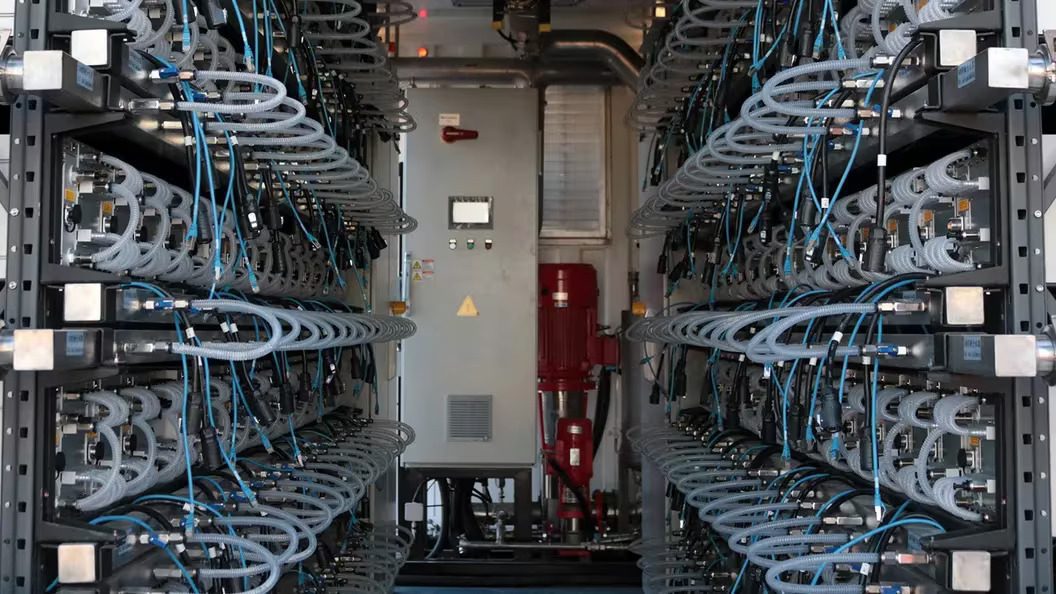Unlocking the Crypto Conundrum: What the U.S. Government’s Bitcoin Mining Survey Means
The cryptocurrency world is always braced for a head-spinning twist, and the latest whiplash effect comes not from a Wall Street sign or a Silicon Valley champion, but from the very entity that often stands at loggerheads with the decentralized dreamers – the U.S. Government.
The Crypto Landscape has a New Surveyor-in-Chief
The U.S. Department of Energy (DOE), via its Energy Information Administration (EIA), is about to launch a survey unlike any we’ve seen before – an in-depth study on electricity use by a select group of U.S.-based Bitcoin miners. The quest is not borne of academic curiosity; it carries the urgency of a state of emergency. The EIA is tapping directly into electrifying insights to gauge the energy hunger of the crypto craze – a sign that this digital disruption has earthquake potential.
A Whiff of Public Harm or A Call to Regulate?
While the DOE maintains a policy-neutral stance, the raised eyebrow comes with a foreboding shadow. Their public filing for the “emergency collection of data request” points to phrases like “public harm” linked to crypto mining. This isn’t merely collecting stats; it reeks of a potential platform for policy-making that could stunt the growth of an entire industry.
Data-Driven Dystopia or Balanced Scientific Policy?
Is this survey innocently altruistic, aiding the government’s ability to track and forecast energy demands? Or is it a foil for foreshadowed regulations, armed with bullet points on how crypto mining is perceived as a burden on public resources? The EIA asserts its mission is to generate “credible data” for policy insights – but for an institution that doesn’t “comment on policy”, they seem to beg questions with every data point they demand.
The Power Play of Public Opinion and Policy
The stakes are high, the players are on edge, and the survey’s repercussions could ripple through an industry that isn’t just innovating but also contentious. China’s crypto mining ban already nudged miners to more welcoming jurisdictions; will U.S. policy shifts cause another seismic shift? How you feel about this governmental gaze may be a litmus test for whether you see cryptocurrencies as digital dynamism or a fiscal Frankenstein.
Bridging from Observations to Implications
If transparency is the name of the game, then more data isn’t just welcome – it’s essential. The EIA’s focus on where, how much, and what type of energy is being dynamically diverted towards the nascent world of blockchain is under the microscope. And here’s where things get intriguing. This level of detailed scrutiny could either present the crypto community with an opportunity to shine under the limelight, showing a responsible approach to energy use, or it could lead to policy proposals that dim the industry’s meteoric rise.
Also read
The Significance of this Deep Dive
Why does this matter? For the average crypto enthusiast, investor, or miner, this analysis shapes the soil in which your digital assets grow. Whether it leads to regulations that may require more eco-conscious practices, or worse, constraint that stunts innovation, the lines on this map will guide the cryptocurrency journey for the foreseeable future.
The Next Chapter in the Crypto Novella
Just as crypto markets are known for their vertiginous volatility, the industry’s image in the public and policy eye is a rollercoaster in cinematic panoramas. Brace yourself for the “what’s-next” after the data comes in, as it may not just inform policy, but write the next page in the tale of crypto unrest.
In these tumultuous times, staying informed isn’t about speculation but about adaptation. As you watch the storyline unfold, keep the principles of your crypto prize stock close, while remaining agile in the face of potentially landmark legislative landscapes. For the cryptoverse, this isn’t just a molehill; it’s the tale of who you are, who you want to be, and how far the reaches of the blockchain shall extend.







